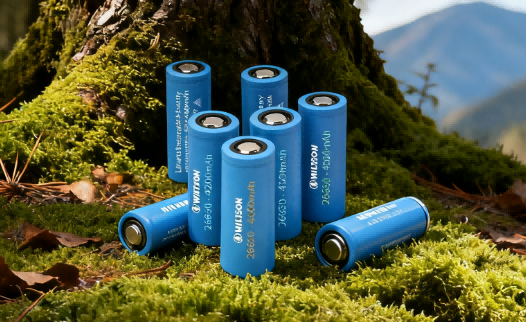14500 vs 18650 vs 21700 Battery: Differences, Performance, and Buying Guide for Flashlight Users

I used to believe manufacturers designed batteries based on what users actually needed. They’d study the market, find the gaps, and build accordingly.
But the more I’ve seen, the more it feels like most battery design decisions today are driven by capital and profit, not real user needs. The market doesn’t follow demand — it creates demand.
If we really wanted to cater to what consumers actually need, we wouldn’t be overcomplicating things. But hey, if that were the case, there wouldn’t even be a reason for this post.
The Basics — Common Battery Types
The most conventional “strategic stock” batteries are your classic AA and AAA alkaline cells.
In the lithium world, the closest equivalent would be the 18650 — the workhorse of the rechargeable battery scene.
There are also 14500 lithium cells (same size as AA) and 21700 batteries. Anything beyond those gets pretty niche, so let’s focus on these three.
-
AA Alkaline Batteries: Super common, cheap, easy to find, but low capacity and disposable — not rechargeable, so they’re not cost-effective in the long run.
-
18650 & 21700: Found in power banks, e-bikes, flashlights, and tons of electronics. They’re rechargeable, higher capacity, and come in both protected and unprotected versions.
-
14500: Similar in size to a standard AA but packs more power thanks to lithium chemistry.
How Battery Model Numbers Work
These numbers actually mean something:
-
Five digits total
-
The first two digits = diameter in millimeters
-
The next two digits = height in tenths of a millimeter
-
The last zero = cylindrical cell
So, 18650 means:
→ 18mm diameter, 65mm height, cylindrical shape.
Simple enough.
Real-World Applications
You’ll find 18650 and 21700 cells powering most flashlights, e-bikes, and portable tools.
Both follow similar chemistry and design routes — just different in size.
At equal material quality and chemistry, bigger means stronger — more energy and capacity. So 21700 cells naturally have better energy density and performance per cell.
The tradeoff? Size. A larger cell requires a larger flashlight body, meaning less portability.
14500 cells are smaller, sometimes using slightly different electrode materials, but they’re super popular for EDC flashlights since they share the same dimensions as AA batteries and are easy to swap.
Examples from Popular Flashlight Brands
Here are a few original (“OEM”) battery models from well-known flashlight brands:
14500 Batteries
-
ACEBEAM ARC14500 – 3.7V 920mAh, Type-C rechargeable
-
Wurkkos 14500 – 3.7V 900mAh
-
LUMINTOP 14500 – 3.7V 920mAh, Type-C rechargeable
18650 Batteries
-
Weltool INR18-30P – 3.6V 3000mAh
-
LOOP GEAR 18650 – 3.6V 4000mAh
-
ACEBEAM ARC18650H-310A – 3.6V 3100mAh, Type-C rechargeable
-
NEXTORCH DC20030 – 3.6V 3400mAh, Type-C rechargeable
21700 Batteries
-
Roxane RS2150 – 3.7V 5000mAh
-
ACEBEAM IMR21700NP-500A – 3.6V 5000mAh
-
OLIGHT ORB-217C50 – 3.6V 5000mAh
-
NEXTORCH DC20005A – 3.6V 4800mAh
-
CYANSKY BL2150U – 3.6V 5000mAh, Type-C rechargeable
Common Patterns You’ll Notice
-
Unprotected “OEM” batteries are basically rewrapped third-party cells — the same cores with a custom wrapper.
-
Flashlight brands don’t make their own cells. They buy high-quality batteries, add protection circuits or rewrap them.
-
14500 cells are highly customized for flashlight use, maintaining the exact height of a standard AA.
-
18650 and 21700 versions often include protection boards, making them slightly longer than standard flat-top cells.
What Protection Boards Actually Do
Protection circuits are there to prevent:
-
Overcharging – cuts off charging around 4.35V
-
Over-discharging – stops usage when voltage drops near 2.4V
-
Short-circuiting – shuts the circuit instantly if current spikes too high
-
Optional features – built-in USB-C charging with indicator lights (super convenient)
My Take on “OEM” vs. Standard Cells
Let’s be real:
-
OEM batteries = third-party cells + protection circuit + rewrap.
-
If it doesn’t have built-in USB charging, it’s basically the same as a normal battery but more expensive.
-
Flashlights and chargers already have overcharge and low-voltage protection built-in.
So having another layer on the battery side is often redundant — adds cost, adds length, and slightly reduces efficiency.
Some DIY enthusiasts even found that OEM batteries with built-in protection can limit high-current output, meaning they can’t hit max brightness on high-performance flashlights.
So my honest opinion?
Any “OEM” battery without direct charging is mostly marketing fluff.
They use “safety” as a selling point to trick beginners into buying overpriced cells.
And some brands (like Olight) even tweak the battery length or contact design so third-party batteries don’t fit — forcing you to buy their proprietary cells.
Price and Value
If your flashlight supports it, standard protected or flat-top cells are usually the best bang for your buck.
That said, Type-C rechargeable OEM cells are super convenient — just plug and go — so it depends on what you value more: price or convenience.
A Note on Battery Safety
Single lithium cells (like one 18650) are relatively safe.
But once you start connecting multiple cells in series, protection boards become essential.
Some DIY flashlight makers add built-in protection circuits inside the battery holder itself — that’s smart design.
Most big brands, though, keep the protection in the battery to lock users into their ecosystem.
Bottom line:
If convenience matters, go for a Type-C rechargeable OEM cell.
If you care about performance and cost-efficiency, standard branded 18650s or 21700s from Samsung, LG, or Panasonic will serve you just as well — without the markup.

